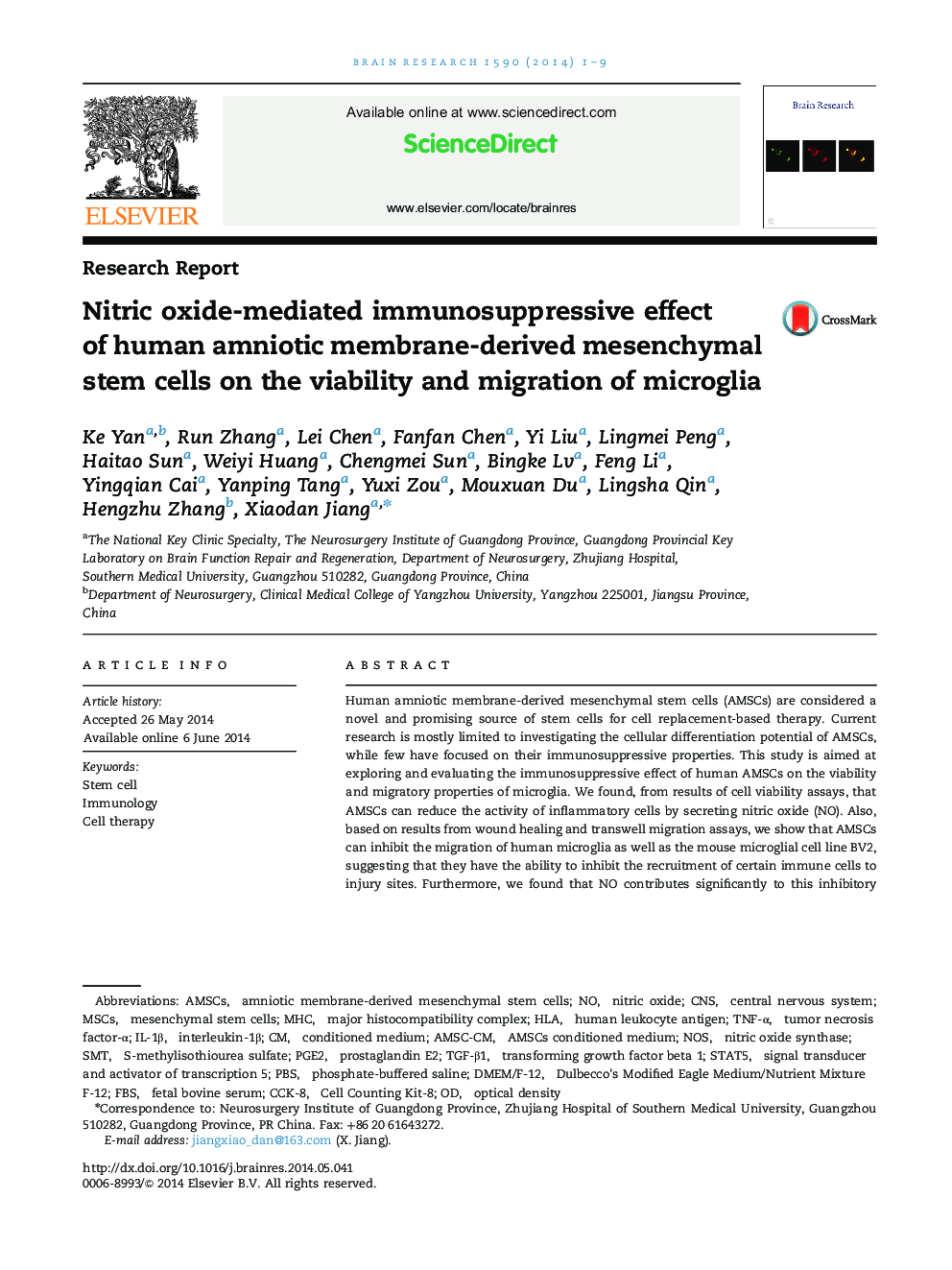| Article ID | Journal | Published Year | Pages | File Type |
|---|---|---|---|---|
| 4323989 | Brain Research | 2014 | 9 Pages |
•AMSCs decrease the viability of human microglia and BV2 cells.•AMSCs decrease migration of human microglia and BV2 cells.•NO plays an important role in mediating the inhibitory effects of AMSCs.
Human amniotic membrane-derived mesenchymal stem cells (AMSCs) are considered a novel and promising source of stem cells for cell replacement-based therapy. Current research is mostly limited to investigating the cellular differentiation potential of AMSCs, while few have focused on their immunosuppressive properties. This study is aimed at exploring and evaluating the immunosuppressive effect of human AMSCs on the viability and migratory properties of microglia. We found, from results of cell viability assays, that AMSCs can reduce the activity of inflammatory cells by secreting nitric oxide (NO). Also, based on results from wound healing and transwell migration assays, we show that AMSCs can inhibit the migration of human microglia as well as the mouse microglial cell line BV2, suggesting that they have the ability to inhibit the recruitment of certain immune cells to injury sites. Furthermore, we found that NO contributes significantly to this inhibitory effect. Our study provides evidence that human AMSCs can have detrimental effects on the viability and migration of microglia, through secretion of NO. This mechanism may contribute to anti-inflammatory processes in the central nervous system.
